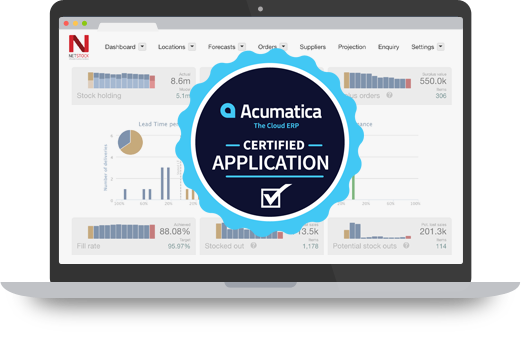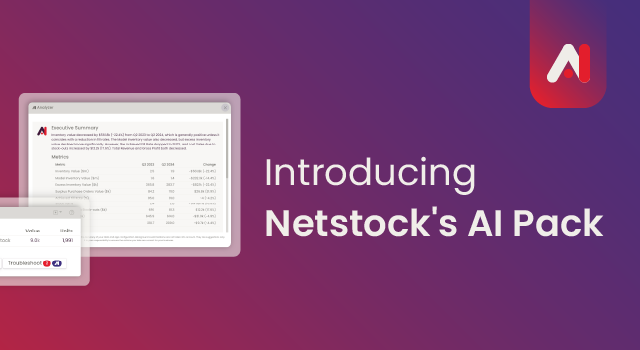In a previous blog post, we looked at the difference between Inventory Control and Inventory Management. Today, we want to look specifically at Acumatica, a true-cloud ERP application that has seen significant growth over the last few years. Our primary focus here will be on how it helps users with inventory tasks and where inventory-based businesses may need an additional tool.
Acumatica has tremendous features and flexibility. It does its job extremely well, but there are some areas where integrated add-on tools are needed to provide crucial functionality. For example, inventory forecasting in a “make to order” manufacturing environment is managed well within your Acumatica ERP solution uc0u8288 – but when it comes to “make to stock” manufacturing, you may want to look at enhancing your system by adding an inventory management solution to provide exceptional demand planning and forecasting capabilities.
Acumatica can manage quite a few key aspects for your warehouse, such as: inventory costs, locations, lot numbers, serial numbers, bin locations, bills of material, production planning, material requirements, purchase orders, sales orders, and freight costs. Acumatica also allows for entry-level forecasting and demand planning, but it only takes into account your standard lead time and order data based on sales history u8288 – and these calculations tend to be rather static by nature. To extend the functionality of your demand planning and to have a more dynamic view of your inventory, you need to take many factors into account, for example, supplier performance u8288 – what is the supplier’s track record on lead times? This allows you to trigger the reorder date and facilitates accurate safety stock calculations.
Inventory management solutions enable you to analyze your items and group them according to the ABC analysis u8288 – your A items are your highest in terms of value and consumption, whereas your C items are your lowest in cost and consumption. Based on this ABC analysis, you can select your target fill rate to ensure you are always in stock without being overstocked.
Additionally, an inventory management solution provides deeper insights, particularly in more complex environments. Consider your C items as an example. These are your low-value slow movers, which means they shouldn’t be a focus for you. However, what if there is a component in your C list that is critical to your “make to stock” of an A item? You cannot afford to run low of those items.
Your ABC item classification may also change depending on sales, demand fluctuations, trends, fads, and seasonal changes. That kind of data will not be available within your standard Acumatica functionality. So now you can start to see that many factors and algorithms are needed to give you the intelligent insights required to streamline your demand and forecasting process.
Acumatica and Inventory Management solutions are mutually inclusive and work side by side to provide a full Inventory control and management experience for your business and your customers. Your Inventory Management solution provides you with the data, insights, and intelligence to accurately forecast your inventory, and your Acumatica solution is ready to execute these tasks to completion. When working together, this creates a perfect, symbiotic relationship that puts you in the driver’s seat to create a more balanced and more profitable inventory.
Listen to Russ Graf (Netstock) and John Schlemmer (JAAS Systems) discuss how Acumatica and Netstock work together to give you better control of your inventory and your supply chain:
{{cta(‘0723f87e-7d19-4c7b-b5ad-3af09c47536e’)}}




